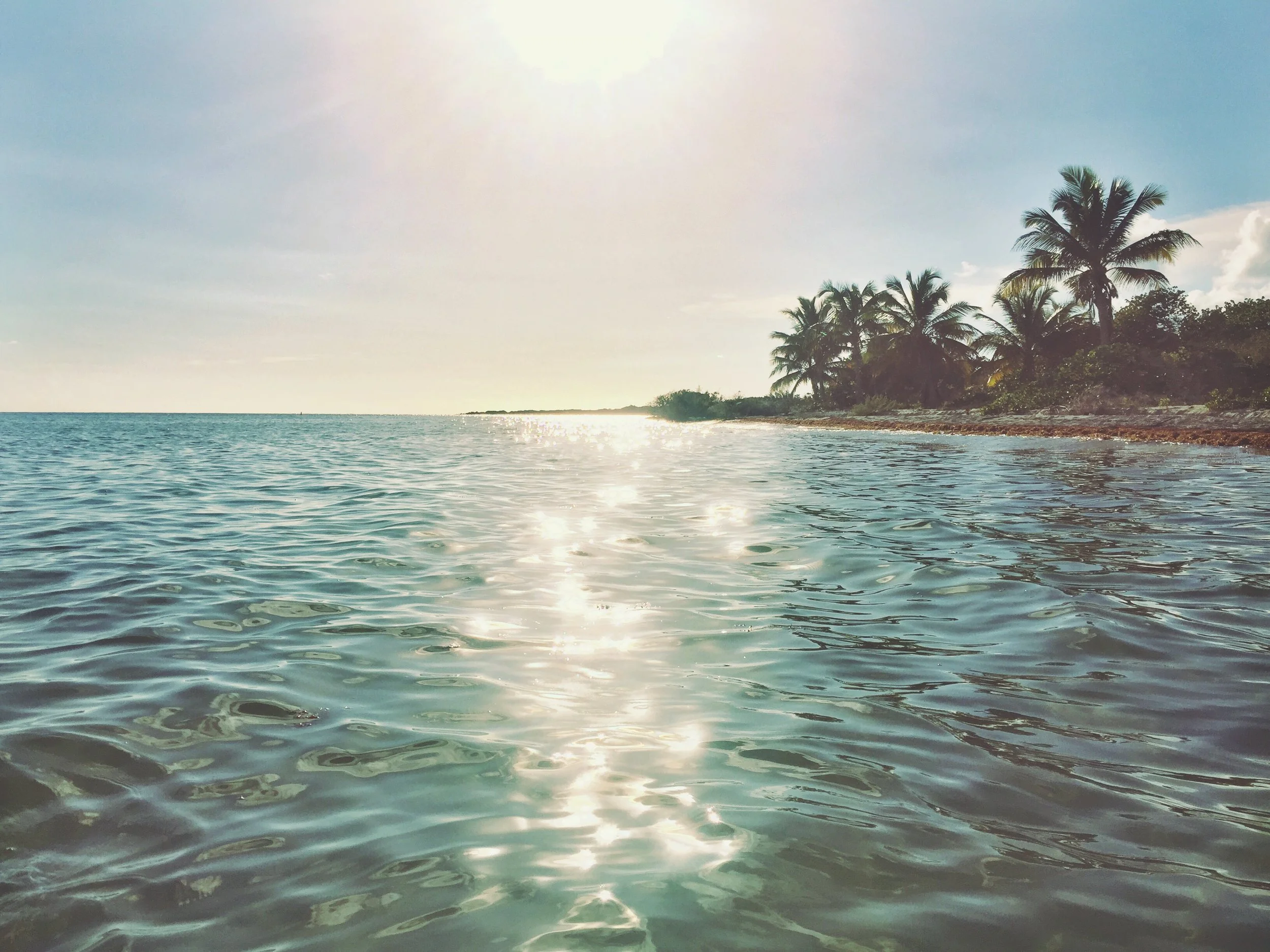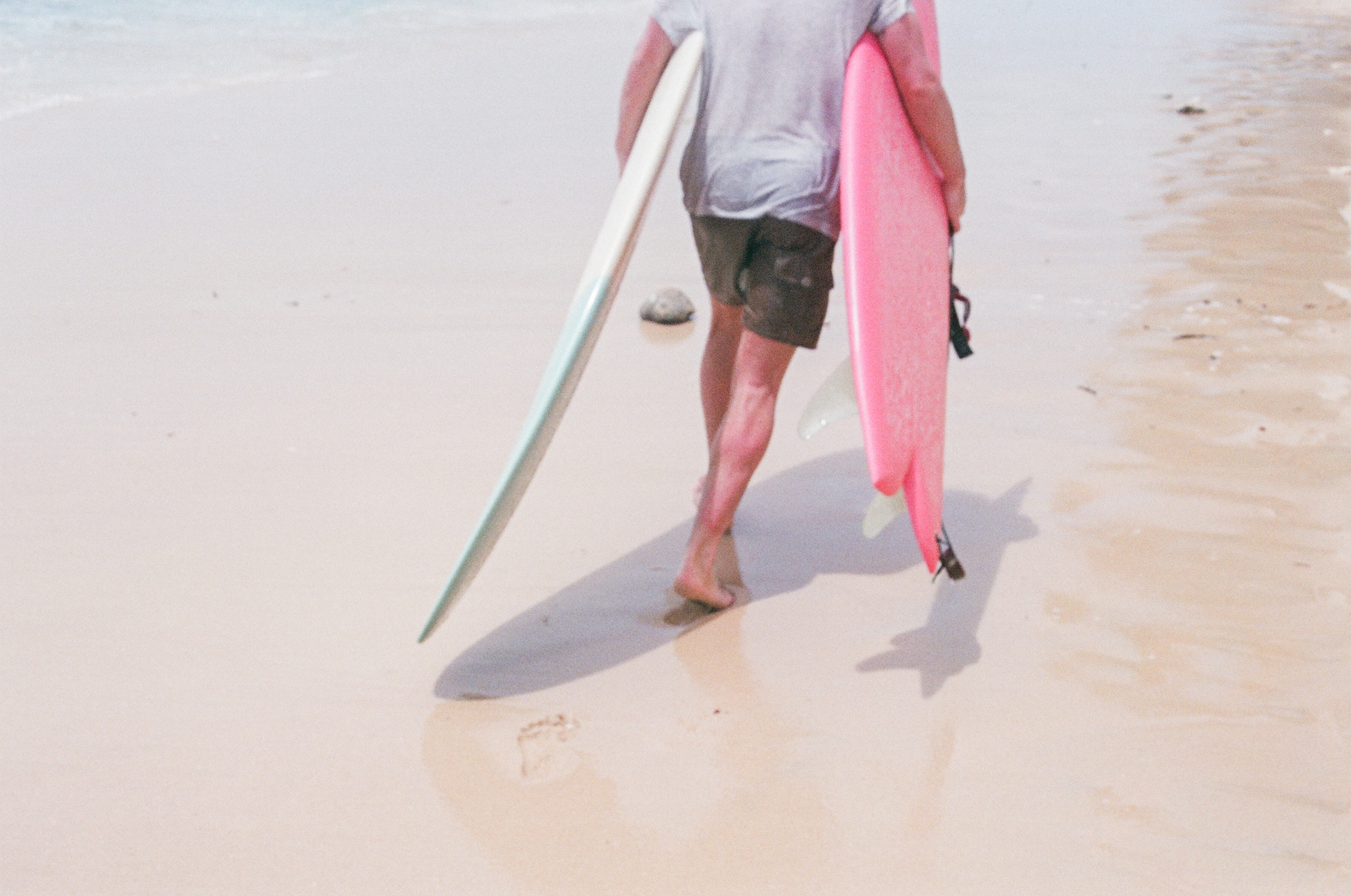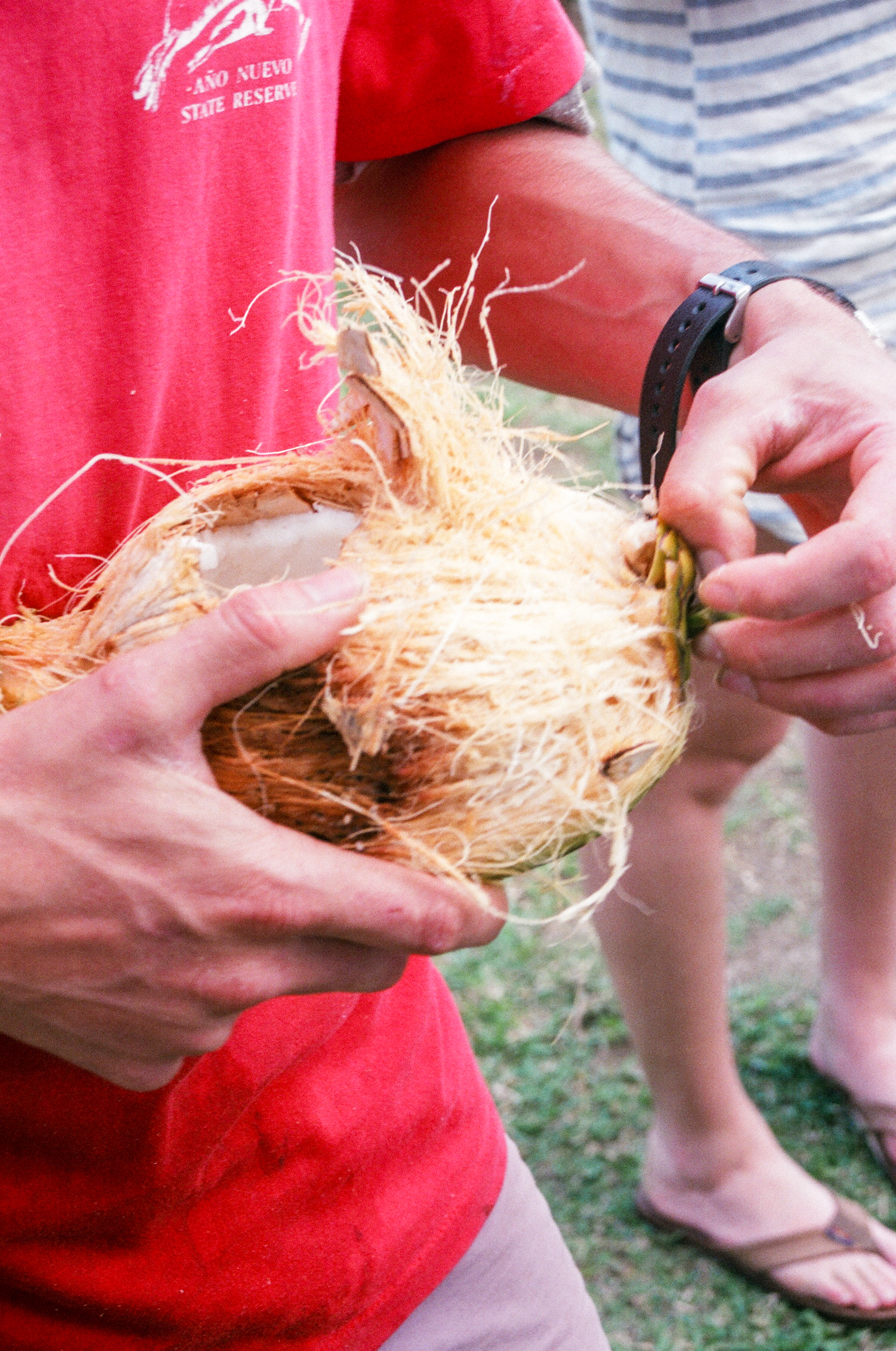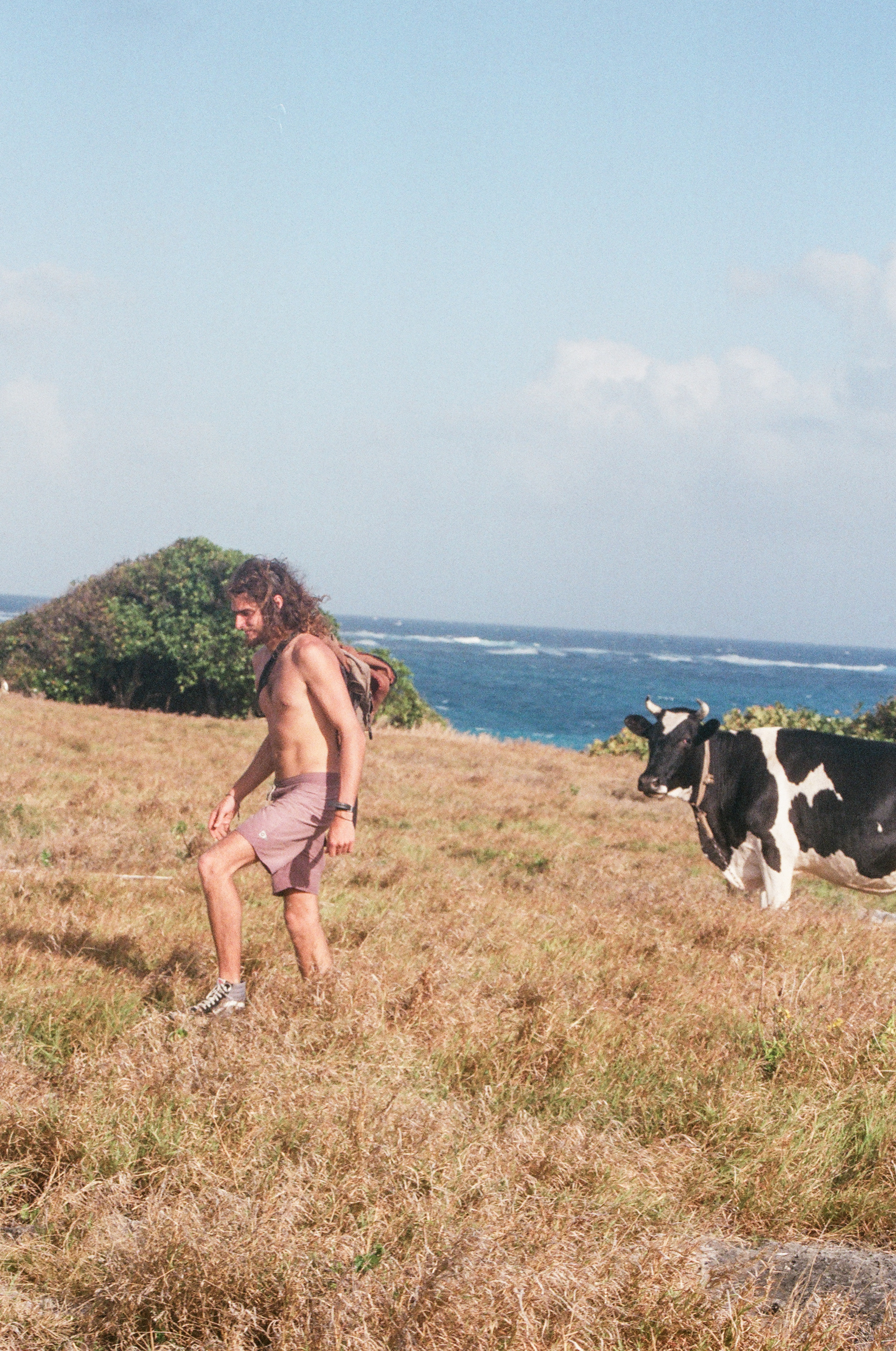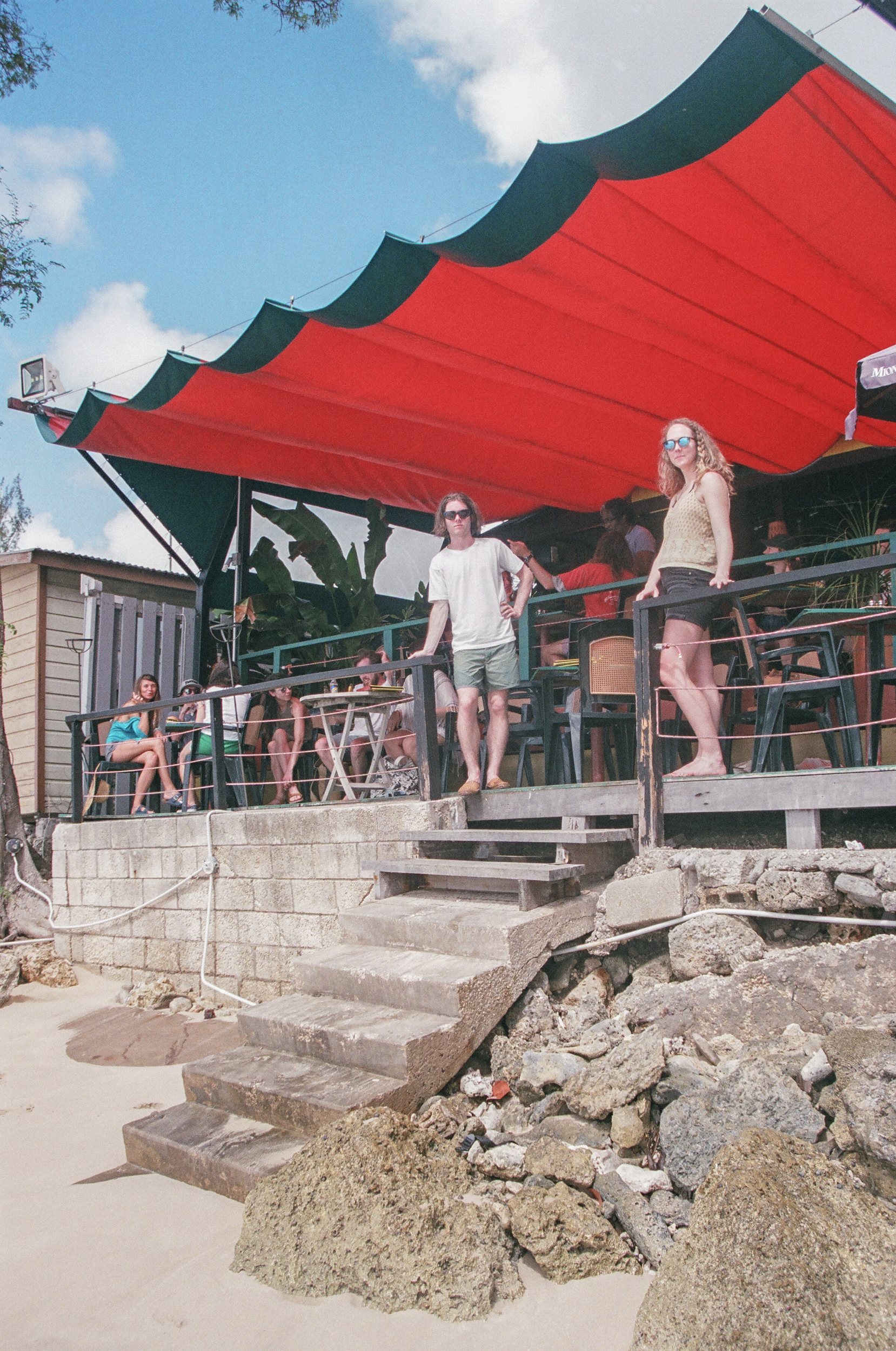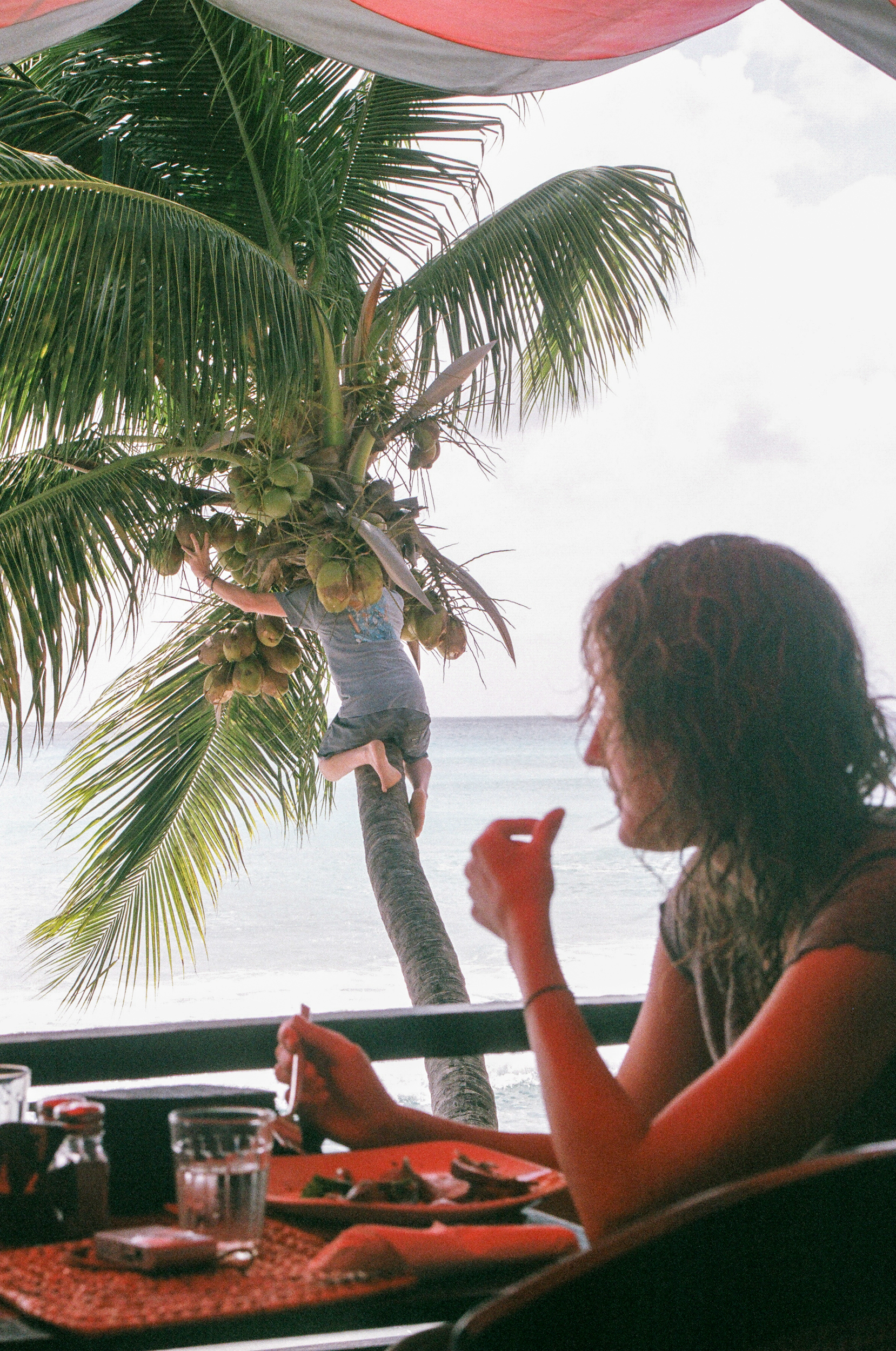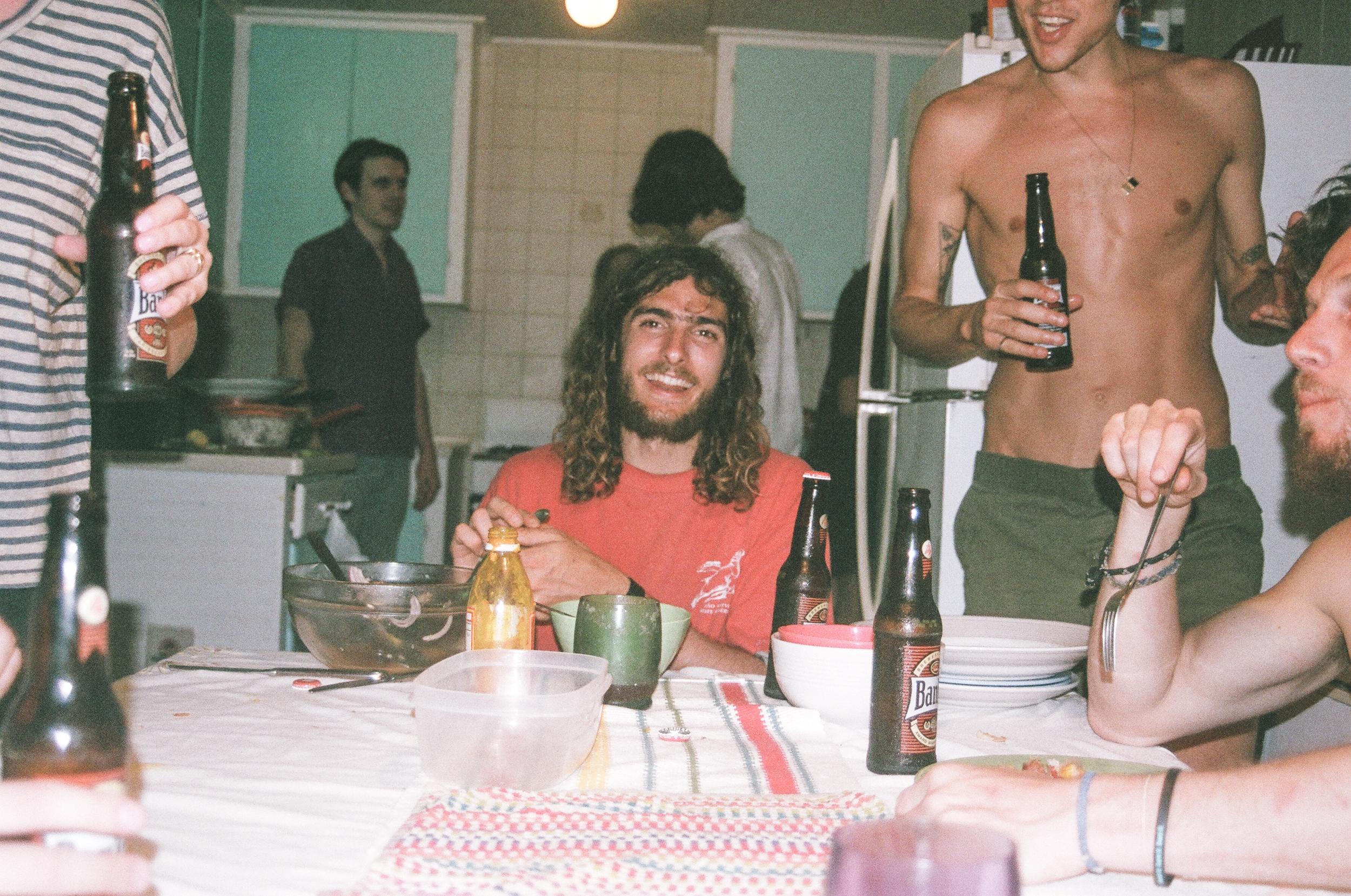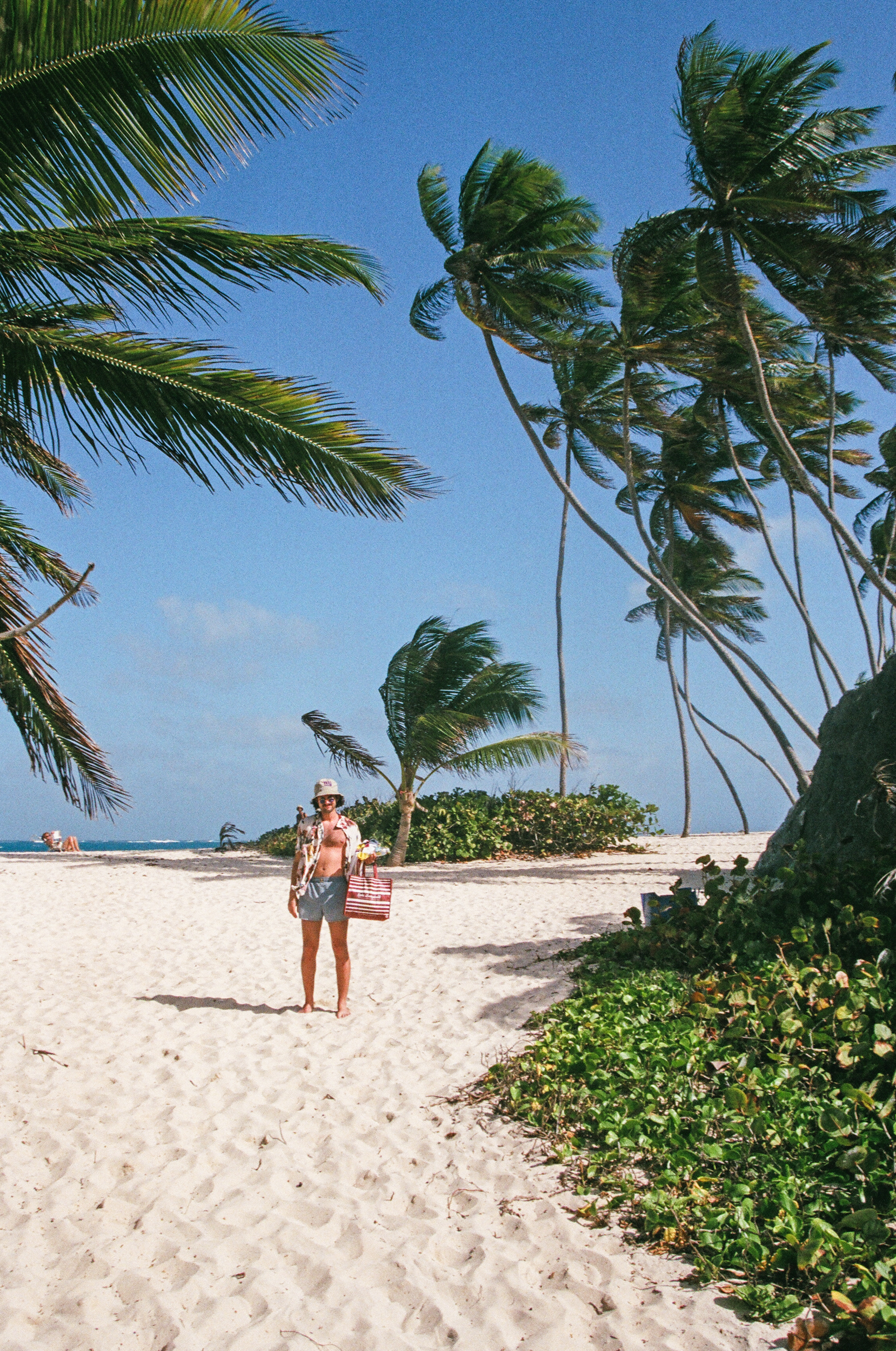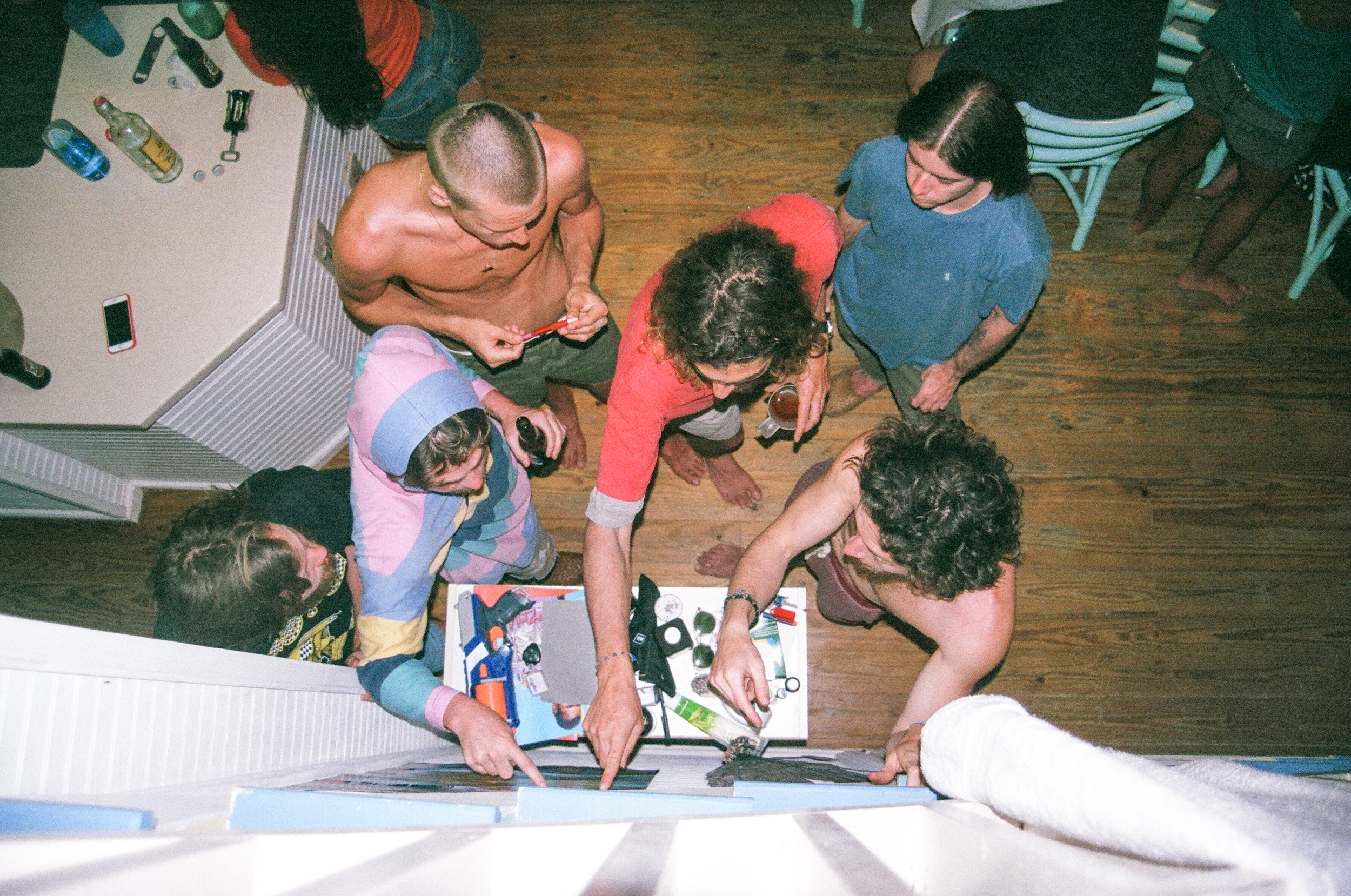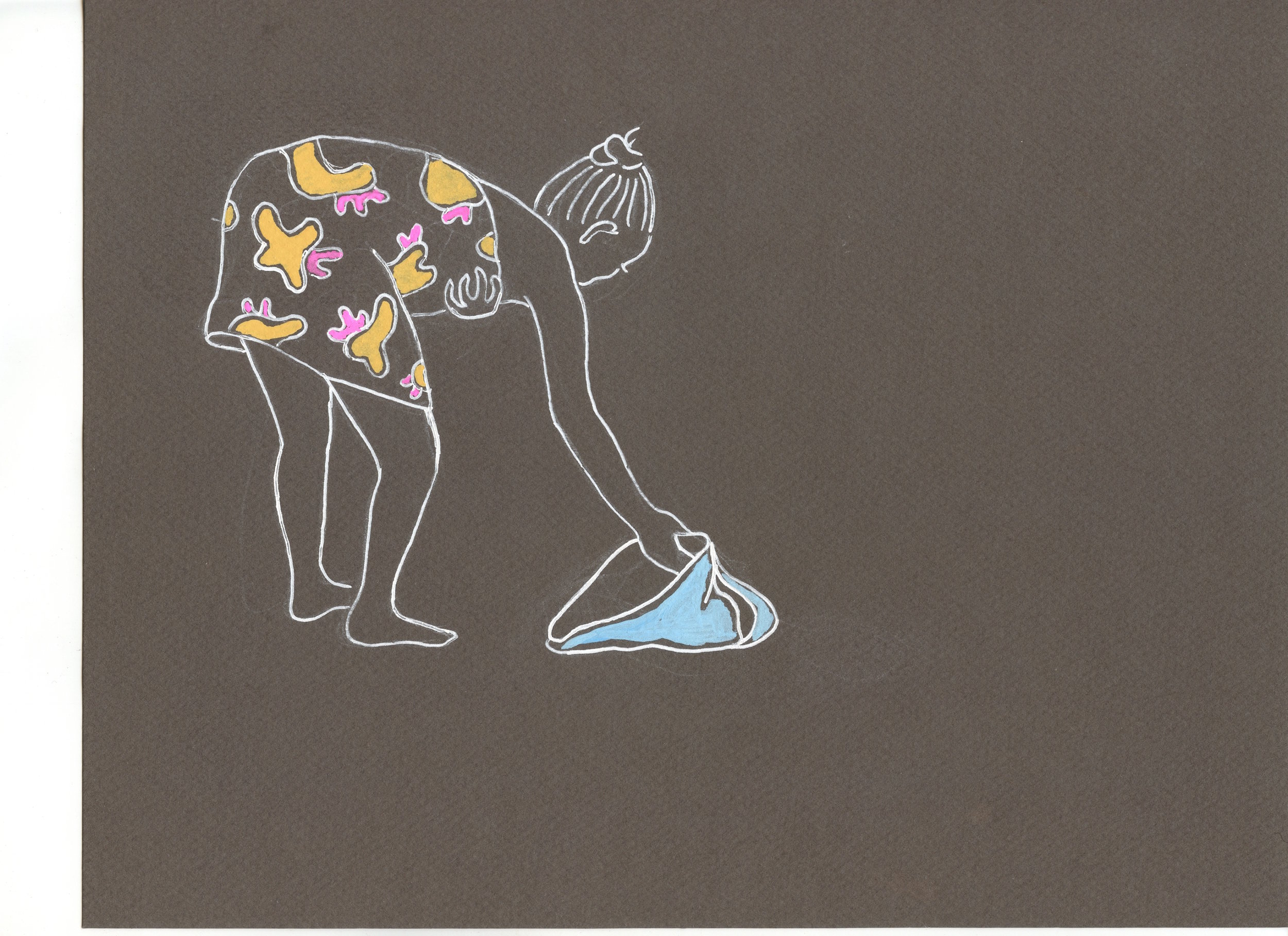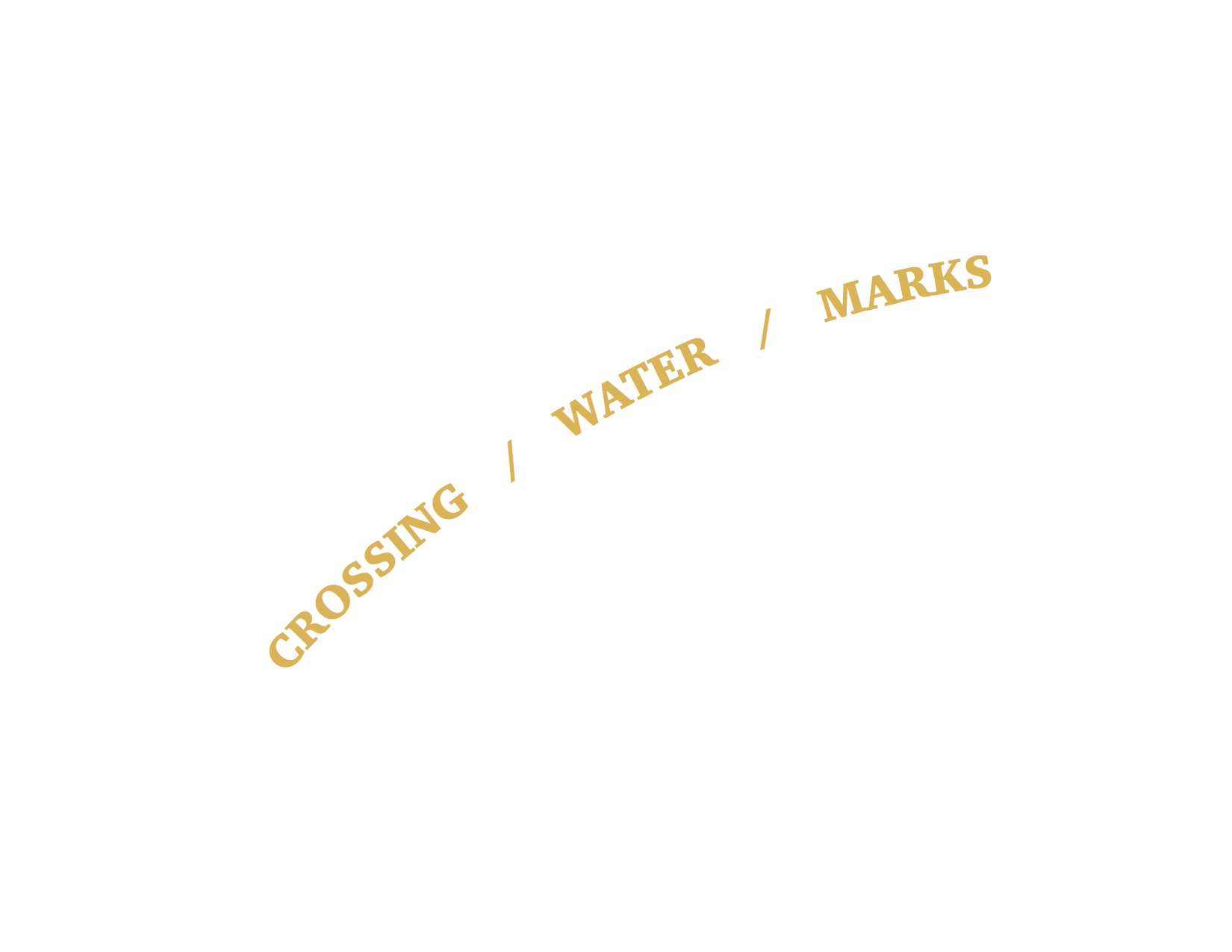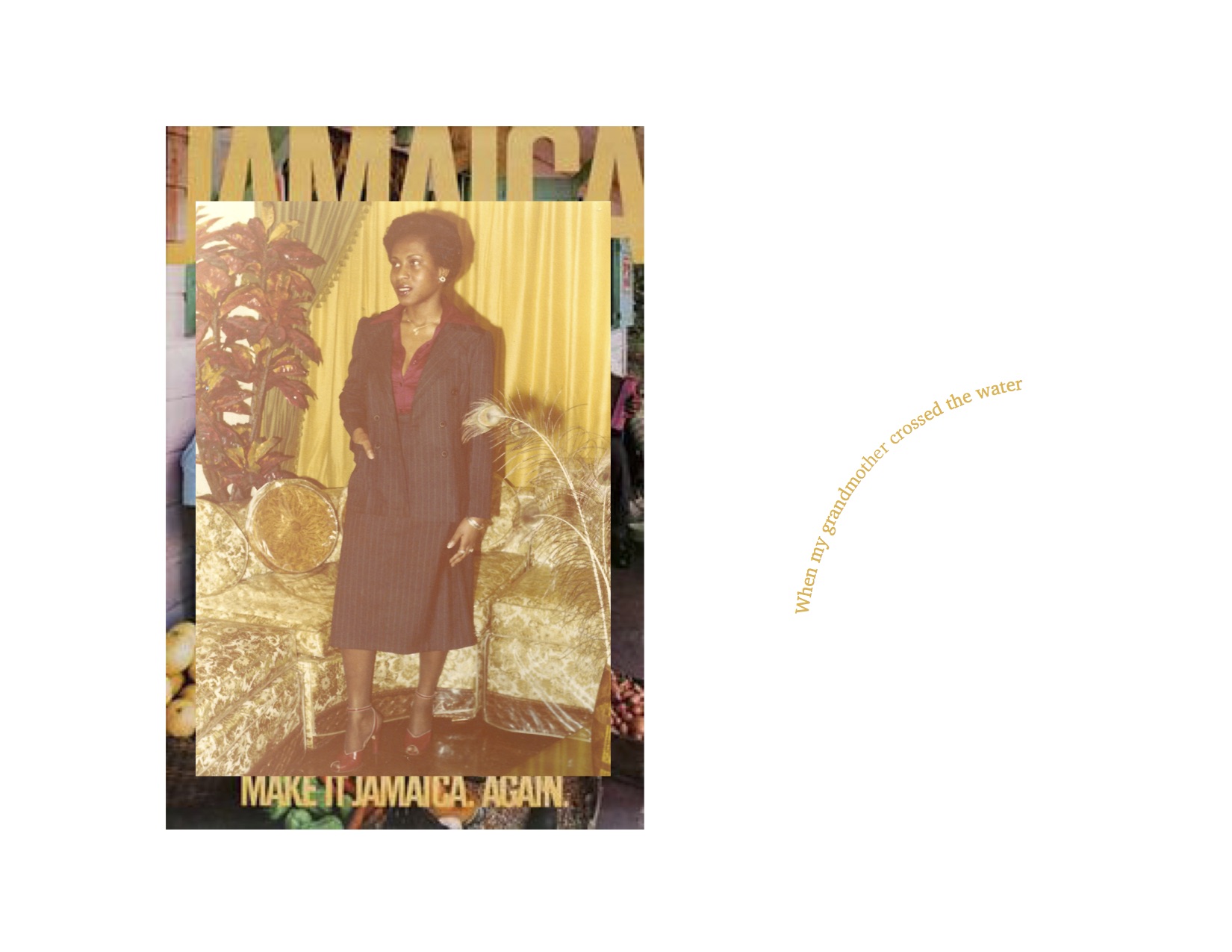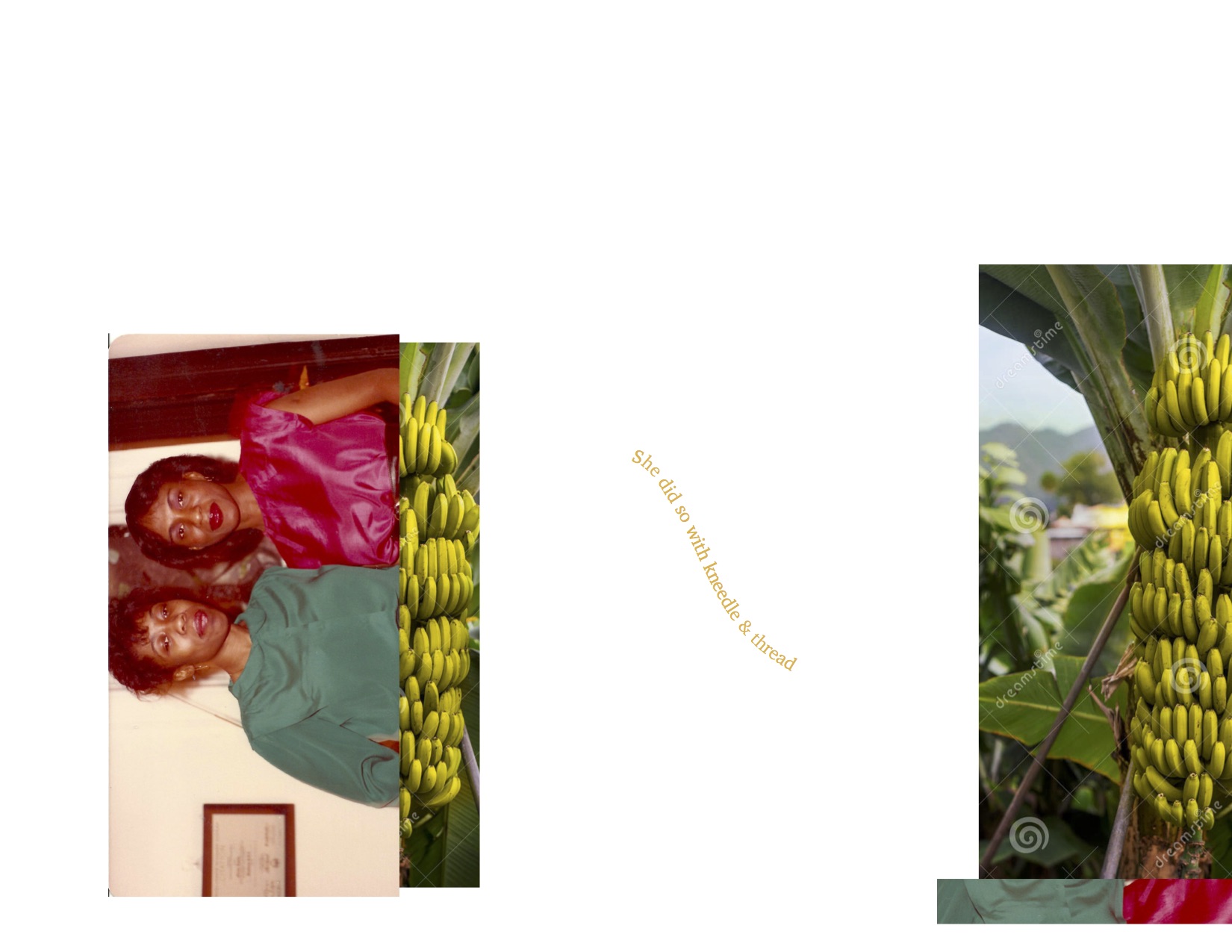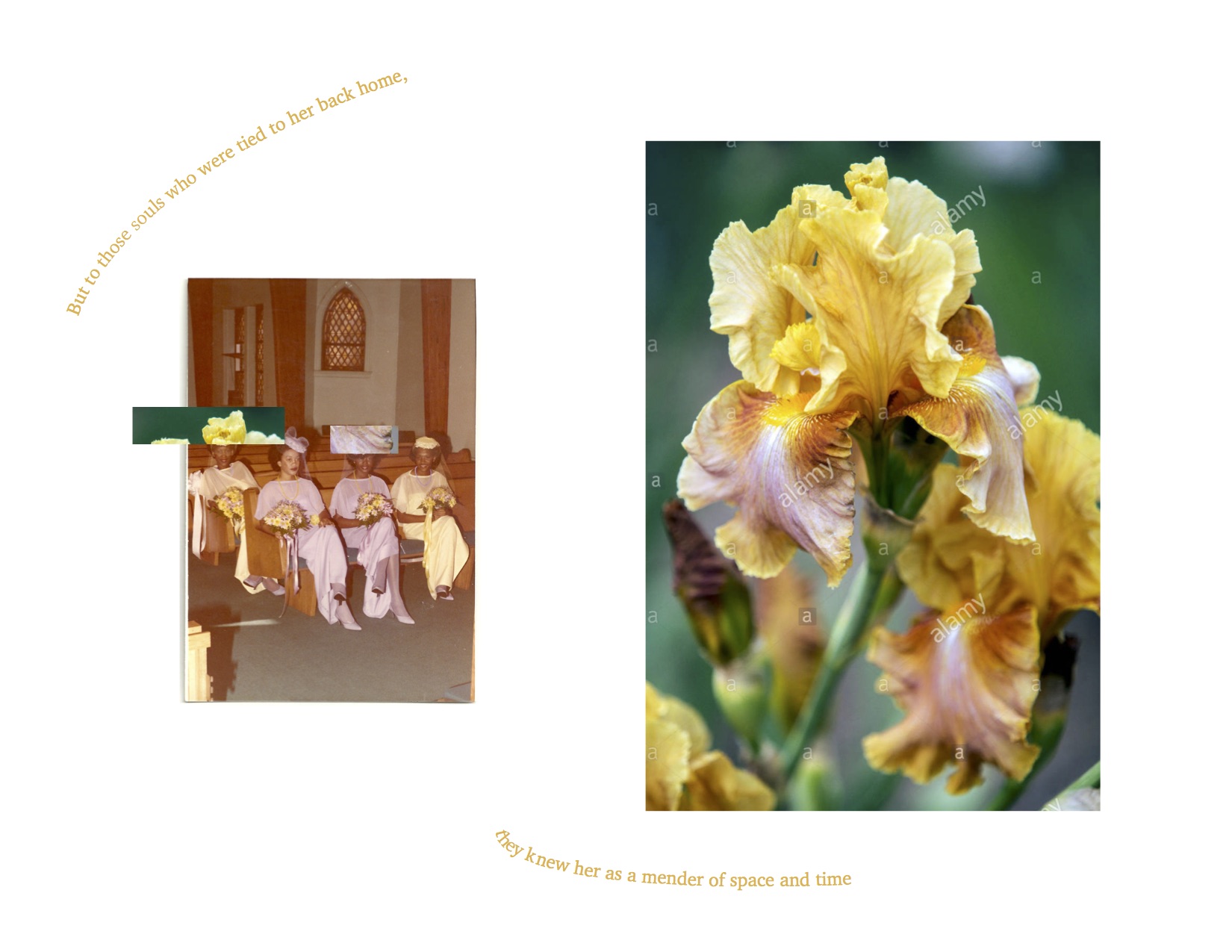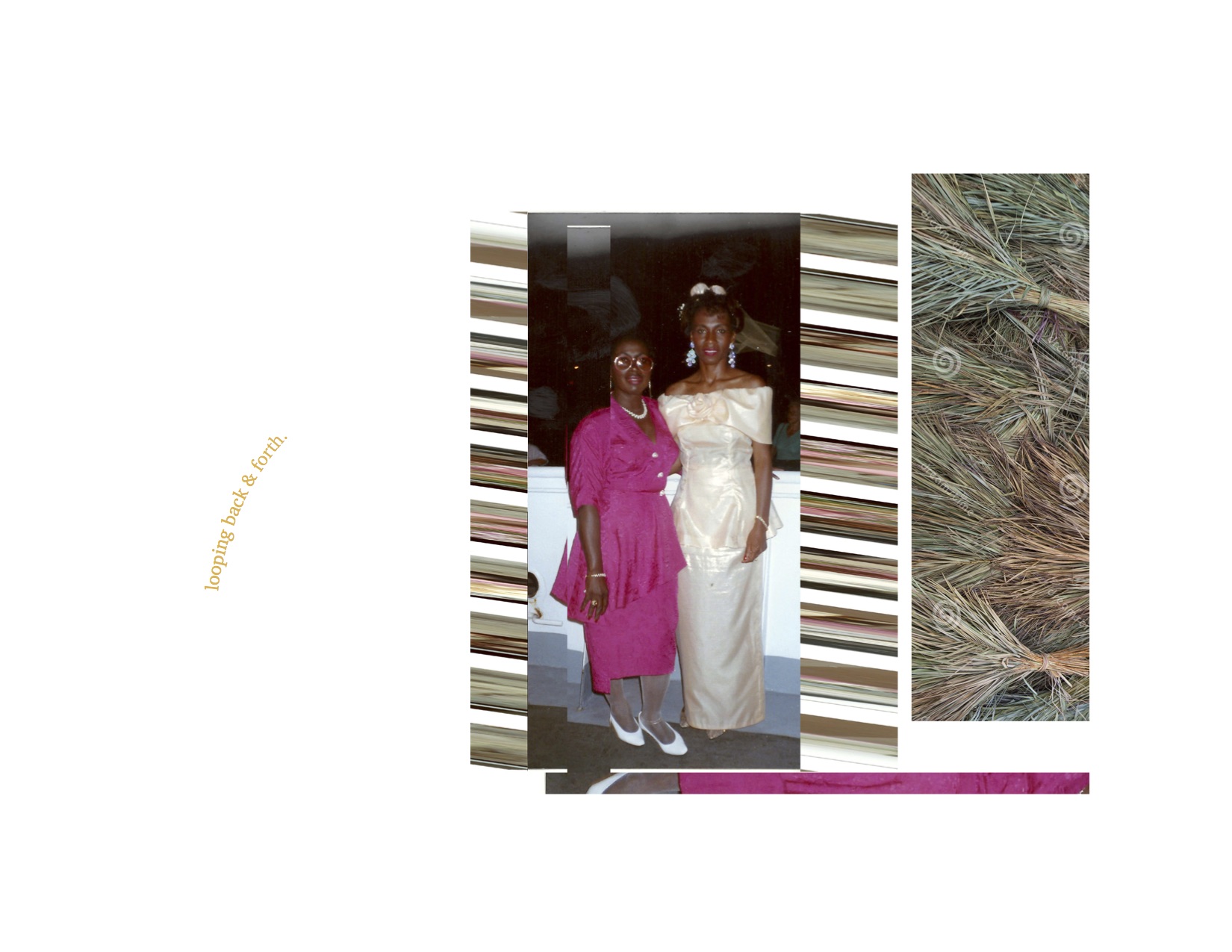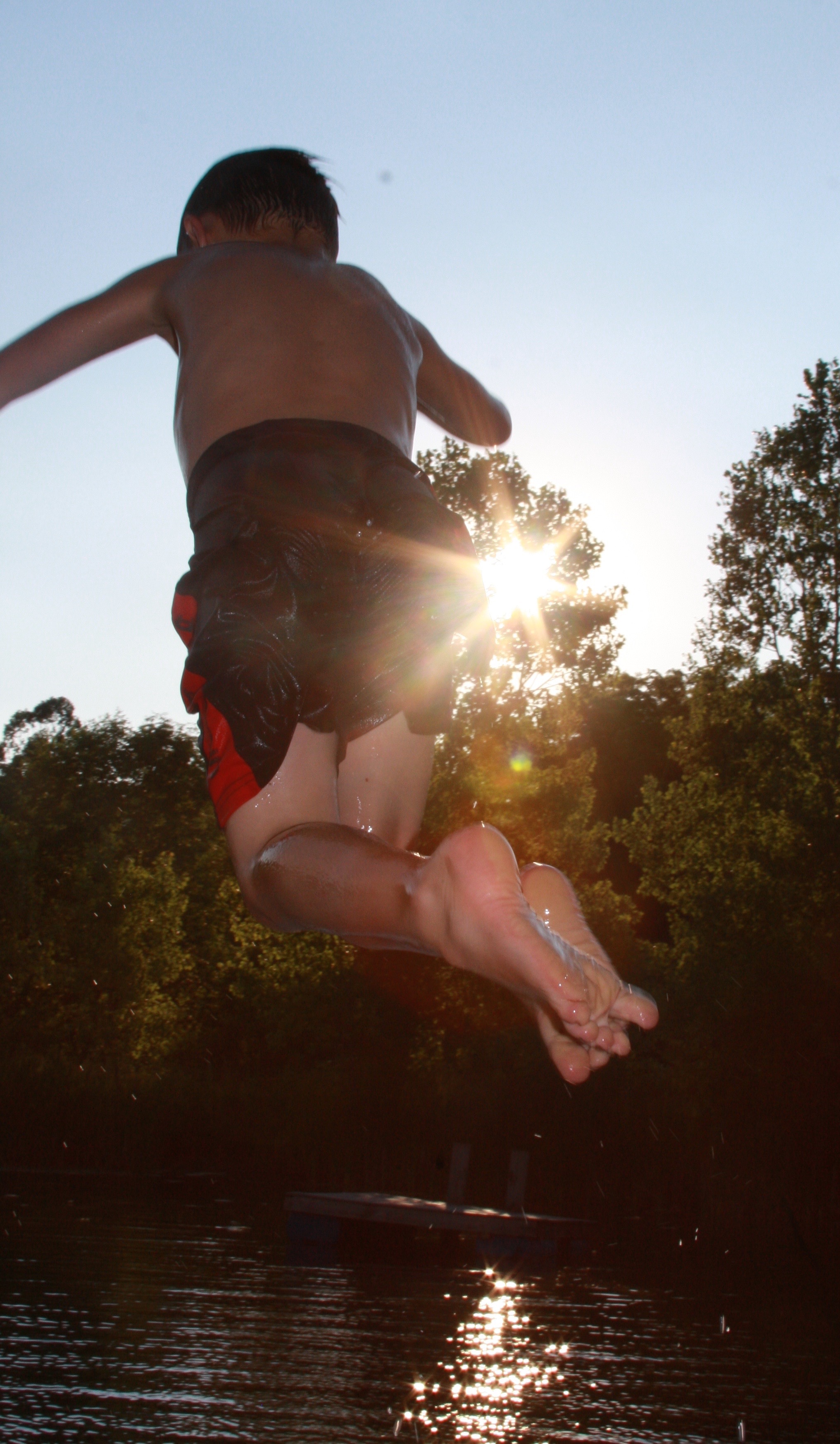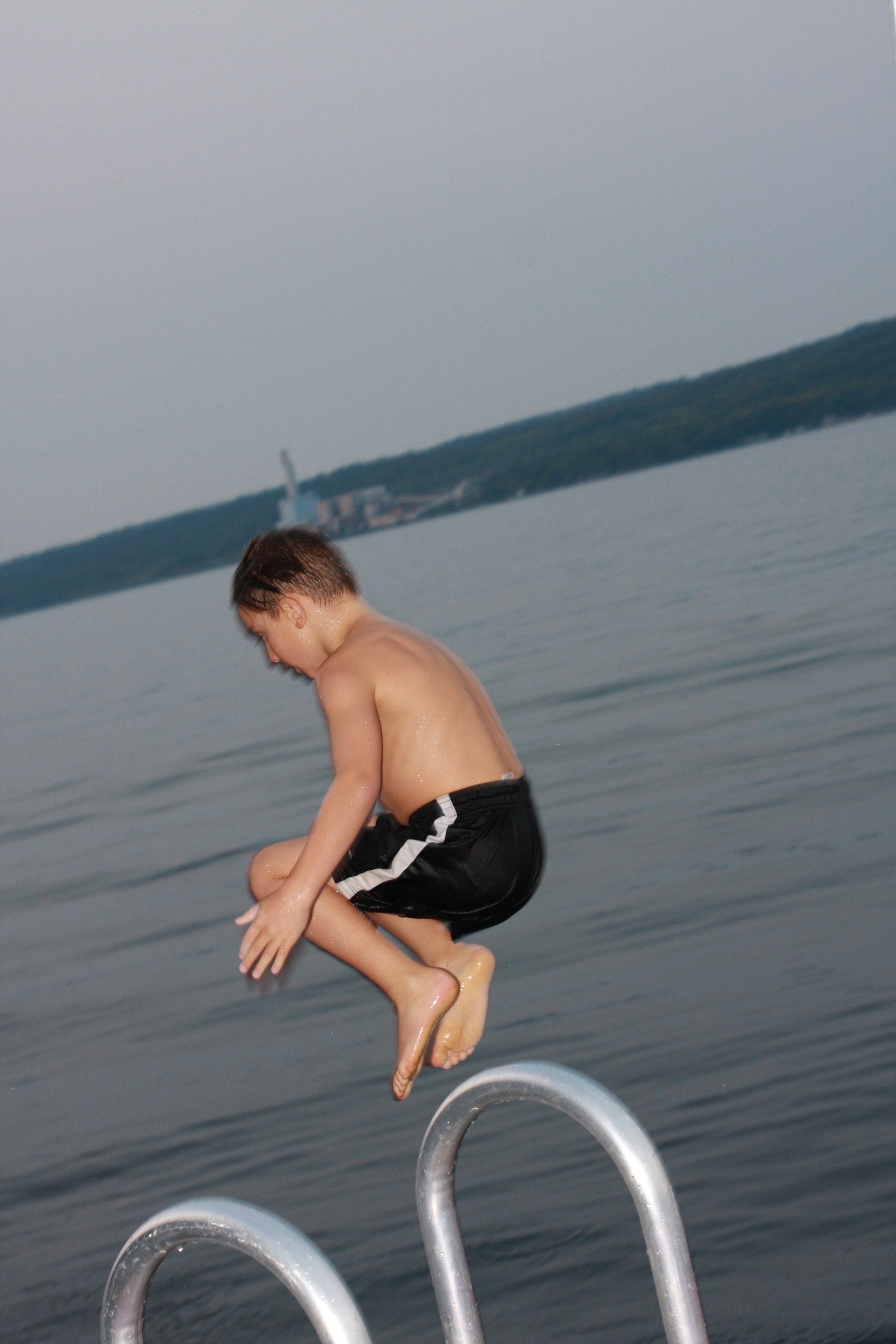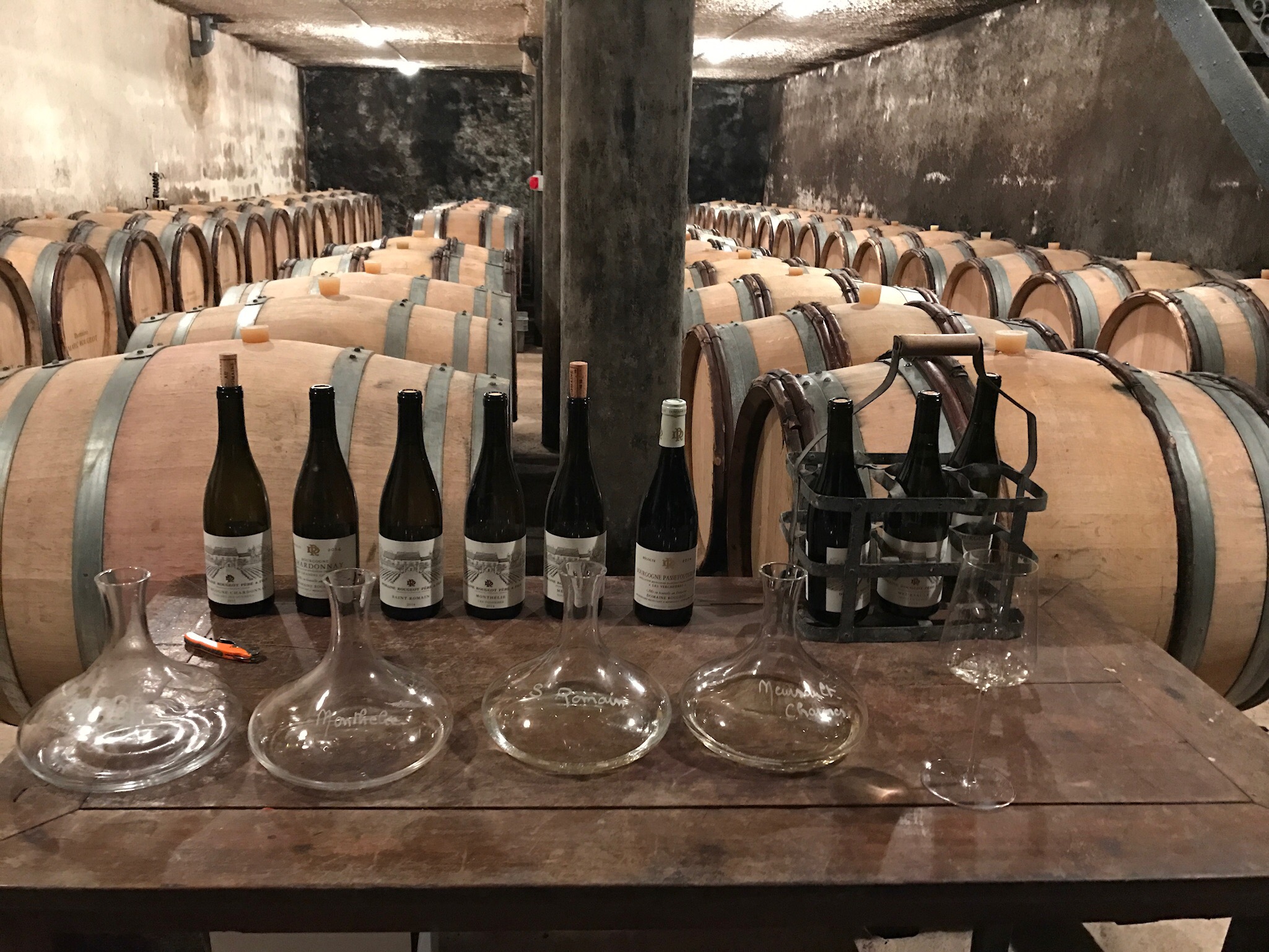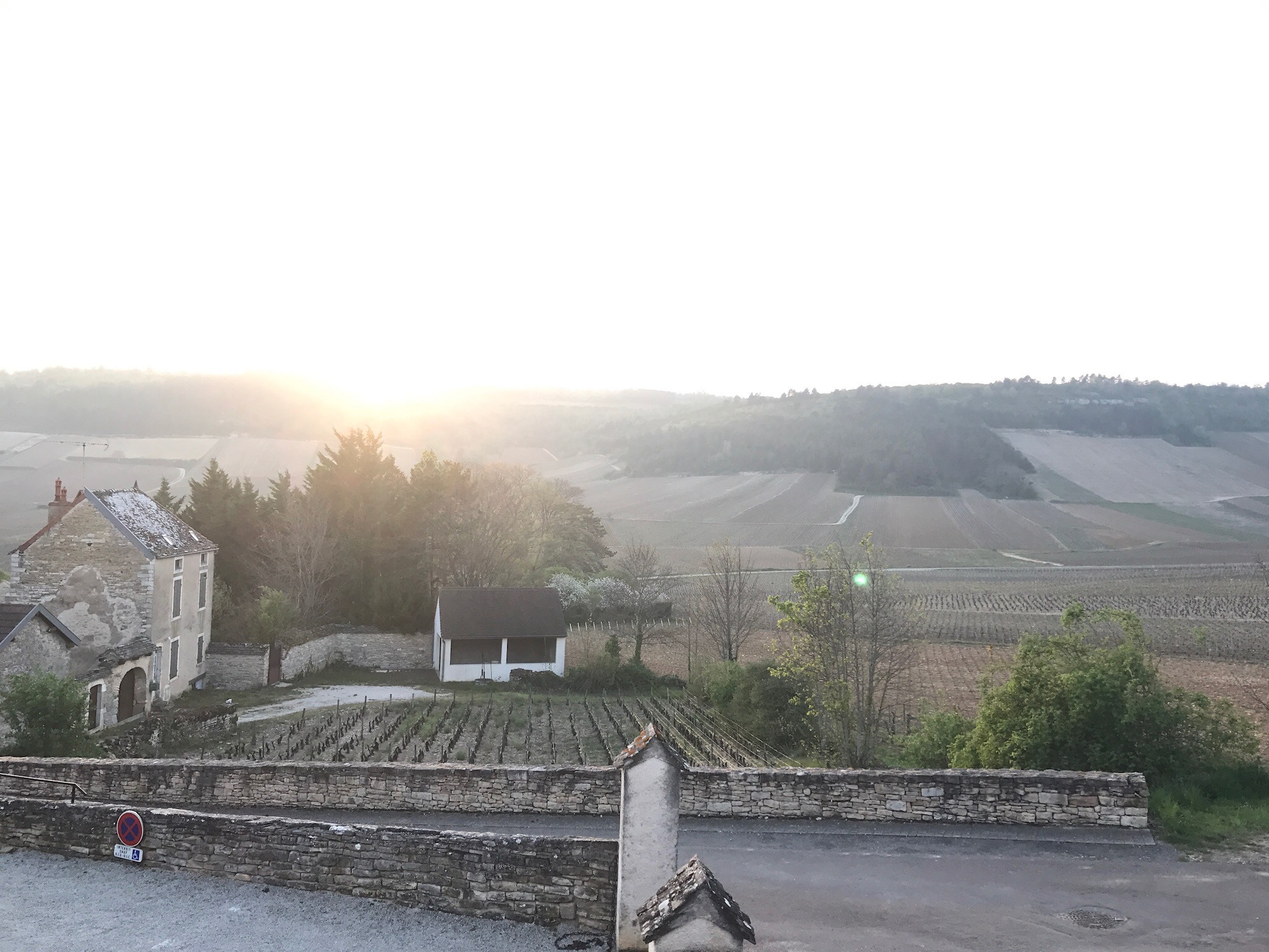Issue 11: Water
WAter
When we first put down on our little excel spreadsheet that Water was going to be the issue for September/October, this was back when we were trying to get rides to the beach, or were trying to buy plane tickets with no money to Miami, and talking about how the most important ingredient in a cocktail was... water. We were thinking about how funny Chia Pets are and the rise and fall of shrimp cocktails.
But with the past month's events -- Harvey, Irma, Maria -- it is impossible to ignore the power of water. It is impossible to omit climate change from the conversation. It is impossible to forget that there are cities that do not have potable water, and what effect that really has on a person's daily life, health, and well-being.
So as we started to put this issue together, we asked our contributors to be creative and critical about how the concept of water pops up in their lives beyond their faucets and water bottles, and this is what they came up with: some fish and chips, some conversation about climate change, wines, oysters, and water as a place of growth.
XO, Josh & Counter Service
Table of contents
For quicker access to articles, click on the titles below to be taken directly there
Rockaway Vibes Jesse James
Fush N Chups Kelly Reid
On Drinking Red Wine with Seafood Matthew Kudry
Oyster tumbling nicolle borrero
crossing/ water / marks devonn francis
Grand Army
Out East
London + Berlin
Rockaway Vibes
Words and Photographs by Jesse James
“I must be a mermaid, Rango. I have no fear of depths and a great fear of shallow living.”
Anais Nin
It’s summertime and my ears are so clogged with water that everyone sounds like a muppet. The characters of Rockaway beach are in full motion. The locals, an ostentation of peacocks, a murder of crows, a tube of surfers; are all flamboyantly unique, yet stuck together like glue. I feel that the commonality of people that move to this town is that they love the vibrancy and energy of New York City, but they’re slightly too salty for the city life and have an insatiable addiction to the sea.
In the high season, the boardwalk is swarming with sunburns and flip flops and the beach transforms into a sea of umbrellas. On good surf days, dawn breaks and dawn patrol dovetails into an insatiable hunger. I weave through the crowd on my skateboard searching for my post surf banana shake and avocado toast.
One night in late June I was hanging out at a bar in Brooklyn with a bunch of goons when I got this cosmic urge to jump in my car and rush back to the damn beach. The moon was full and illuminated like a jellyfish, floating paralyzed in the sky. I ran for my board as the lines seemed cleaner than those at the bar. Dark and velvety smooth, but clear and sharp like glass. There is something so entrancing about night surfing. You can feel the silent orchestration of the man in the moon, and the moon herself has a gravitational pull so strong, it causes the ocean to bulge.
The Rockaways peak like a wave, making the winter feel like a bit of a lull. The essence of summer travels through the winter causing elemental disturbance to the surface and suddenly it breaks, releasing all the hard work from the seasons prior. Even though the waves are better and way less crowded in the winter, there is something about the summer that feels like the ultimate reward. Fish tacos, beers, burgers, bon fires, and surfing in a bikini reminds you what you’re living for.
Fush n Chips
Kelly Reid
My mum cooked dinner every night of the week but like our Heavenly Father, on the fifth day she rested - that is, on Fridays we had fish n chips. The best place was a caravan with fairy lights next to the BNZ bank and they offered Kumara (New Zealand’s version of sweet potato) fries which were very fancy at the time. It was the only day of the week we were allowed to eat dinner watching tv and me and my brother would fight for the best armchair that had the best viewing capabilities.
Fish n Chips, without a doubt, are the most popular take-away food at home and the only fast food I miss. So it is a great tradition when I return home to New Zealand that my first dinner with the family MUST be fish & chips - preferably accompanied by a Gin n Tonic with lemons stolen from the neighbor's tree.
There is this really special takeout within 5 minutes of my parents house - “past 16b’s horses, through the cemetery, take a left at the abandoned railway carriage and continue on around the bottle shop”. You walk in and ring a bell, this alerts the teenager taking a “smoko”. They’re always smiley and polite and write your order on blank scrap paper - 1 scoop of chips, crumbed snapper is my order and maybe a deep-fried pineapple ring if I’m feeling indulgent - he rings it up on a register that looks like a toy, and, even though I’m the only one in the shop, hands me a popsicle stick with a handwritten number on it that corresponds to my order. I appreciate the stickler in him that insists on following procedure and wonder if he’s willing to relocate to the restaurant I run in the Catskills.
There is always a poster of all the New Zealand Commercial Fish Species and many trashy magazines to make sure you know what local tv celebrity is having a baby or leaving their husband. Your order is called - again, I’m still the only one here - and he insists on me handing back the stick, again, I’m hiring...and I tuck the warm package under my arm and can’t wait til I get home and tear the paper to sneak some hot chips out before getting home.
Without fail it makes me smile and I wonder how I can recreate the same experience back here. However I think the key to the whole operation (at least for me) are the accents, the salty breeze of the ocean and charming lack of finesse that would have trouble translating, and so (thankfully for my waistline) it remains a treat I have to fly 8915 miles for.
On drinking red wine with seafood
Matthew Kudry
Aboard the Orient Express in 1963’s From Russia with Love, James Bond, his female companion, and an assassin named Donald Grant posing as an MI6 operative sit down for dinner. They all order the grilled sole, with which Bond requests a bottle of Taittinger Comtes des Champagne; Grant orders a glass of Chianti. Later, when Grant is holding Bond at gunpoint, Bond delivers this line: “Red wine with fish. Now that should have told me something.” The man was clearly an impostor: any member of British society would know it’s a deadly faux-pas to drink red with one’s fish.
This rule of etiquette is so deep-seated that even my mother, who doesn’t drink wine, knows it. And on a commonsense level it works—the delicate texture and mild flavor of fish would seem to make it the preserve only of white wine. Luckily, we live in a time where it’s all right to distrust conventional wisdom. After all, there are lots of different red wines out there and almost infinite ways of combining ingredients, so sooner or later a red wine is going to work with a seafood dish. Making a smart pairing just involves a consideration of the flavors and textures of each. (And no, the answer is not always “a light red.”)
But first let’s admit to ourselves that there are times when it’s almost definitely not going to work:
Fluke crudo with citrus, pickled things, or herbs and such. Variations on this dish have been making the rounds in New York, and they do not want red wine near them. The bright flavors, the mildness of the fish, and the overall paucity of fat makes this a job for white wine only. Raw oysters with any kind of typical accompaniment. Definitely Chablis-Champagne- Riesling territory, but with the right oyster and mignonette, something light like a Régnié or a Spätburgunder or a Loire Valley vin de soif might work to access the iodiney, mineral flavors of those lil’ guys. Fish and chips. Not a place for wine. Beer only!
Getting closer:
Grilled mackerel with a raw tomato and herb salad. Perfection for Riesling. Just beautiful. But if you insist, a 2016 Juliénas would also perform very well. A semi-carbonic Pinot noir would be lovely too, and so, probably, would a nice fruit-forward Mencía. The fish is grilled here, and it’s also an oily fish, so there’s a fair amount of texture for the fine tannins in the wine to link up with. Also the fresh red berry fruits in the wine meet up nicely with the freshness of the garnish.
Now you’re talking:
Roasted black bass (skin still on) with hen of the woods mushrooms and potatoes. I just made that up and it sounds delicious, and if this dish were in front of me I’d be reaching for some Dauvissat to drink with it. But we’re drinking red, and we can actually choose something pretty complex with this.The fish is roasted, plus it’s gained in flavor, texture, and fat from the skin still being there, which invite the tannins and acidity of red wines; plus you have the meaty, savory mushrooms to play off of and the satisfying texture of the potatoes to complement the wine. A red Burgundy with some age would be great. So would an older Bandol. Certain Barolos—finely textured ones made by quality-focused, traditional houses—would also find this pairing flattering. Even a well-cellared Bordeaux would do well here.
Now this is just cheating:
Monkfish roasted with bacon-wrapped sunchokes in a red wine sauce. I feel like I shouldn’t have to explain why a red wine would work here, but... 1. Monkfish is about three base-pair mutations away from being beef, 2. the sunchokes are wrapped in bacon, and 3. there’s actual red wine in the dish. Any of the red wines mentioned for the previous dish would work, and, who knows, maybe ones that are even heartier, like some California Syrahs and Cabernets.
So basically, don’t go for a red wine unless the fish you’re about to eat has been cooked at least a little. Techniques like searing and roasting will produce rougher textures and flavors that red wines like to be around; poaching, on the other hand, makes for more delicacy and should steer you towards white (unless the garnish takes you back to red). Consider the accompaniment for the fish: is it fresh and raw? cooked gently? not manipulated much? This probably means you should go for a younger red that displays fresh fruit characteristics. When they’re cooked more and take on deeper flavors, then they can partner with bigger, more complex reds.
Or, you know, just drink what you want and stop worrying about it so much.
When we asked Amelia Telc
To possibly write something for Counter Service, the first thing she thought of was the Shrimp Cocktails scene in Beetlejuice... so here we have a quick break, to remind you all of that iconic scene. Youtube it if you need a quick reminder. XO
Just add Water
Photographs by Will Foster
Letting the mud take its due
Words by Laura Zulliger
“Laura, can you not crab while I’m fixing this thing?” my grandmother kindly pleaded from the water while she struggled to untangle the anchor line from around the motor’s propeller. My 77 year-old grandmother and I had been crabbing for the past several hours in our favorite creek, dubbed the “magic creek” because that’s where we always caught the most crabs. My grandmother was the first one to teach me the art of catching blue crabs using a hand line. She taught me along the creeks she grew up crabbing in as a girl my age. We used a small 13-foot Boston Whaler from 1968.
Crabbing seems simple: take a 15-foot line of twine then on one end tie a shower curtain holder and on the other tie a small but sturdy stick. The stick helps you reel, or twirl, in and release line according to how deep the water is (ideally 4-6 ft). The curtain holder spears the half-frozen raw chicken neck you use for bait. Blue crabs love to eat dead things, and chicken necks hold their form best while stepping in mud and salt-water for hours. Other than that, all you need is a trusty net for scooping crabs attached to your bait and a basket tall enough to not let the crabs crawl out (because, oh, they will) and ideally your basket has holes in it so you can “freshen up” the crabs by giving them a loving dunk every half-hour.
Finesse. That’s the most important part that makes crabbing with a hand line an art. There’s no finesse to a giant metal crab trap or a basket - you just dunk and lift. But, a hand line? Now, that’s the elite sport of crabbing. And that’s what my grandmother taught me.
In my elementary school summers when I wasn’t in a classroom, we would go out together for a few hours just about every week. We’d patiently wait for just the right low tide and go slightly before or after. The Georgia Coast benefits from the second largest tidal difference on the eastern Atlantic seaboard -- 6-8 feet difference on average. The only other area with a higher difference between lows and highs is the Bay of Fundy in Nova Scotia.
This particular day, we had gone right before the low tide to magic creek. We went in just before it was too low to get through the shallow mouth of the narrow creek, trimming the motor to avoid scraping the propeller on oyster beds. The crabbing that day was good! We pulled in 15+ large males in the first hour (by law you’re only allowed to keep the males in order to let the females live on to replenish the population, and because, who needs men anyway?). The lowest of low tide gone and past - a time we refer to as “dead low.” At dead low tide, the marsh crackles with life: it’s feeding time. The fiddlers are out collecting, the birds are out swooping, the shrimp jumping like crazy in the shallow water and the low water settles into spartina roots.
We continued to crab as the tide rose again. My grandmother and I typically worked as a pair. One of us would slowly, inch by inch lift the line feeling the delicate vibration of a crab clinging to the soggy meat at the other end of the string. Slowly we’d bring the crab up shallow enough into view of the netter. The netter then swiftly scooped the crab, not letting it skitter out of the net. My grandmother and I made a great team. She had the patience and the finesse to slowly bring up the crab without it sensing the ascent. Without seeing anything, she could feel how big the crab was or how many were latched on just by feeling the weight and vibration of the line. I was good at impatiently and frantically driving the net into the water to capture the crabs.
As the water level rose we drove deeper into the creek in search of shallower water. My grandmother let me drive the boat (my favorite thing when I was 8). We both forgot to pull up the stern anchor line and quickly it wrapped around the propeller. The motor shut off to not overheat. She tried to untangle it without getting in but the tension required someone to crawl into the shallow brackish creek water that was only an hour ago alive with fish, eels, crabs, and who else knows what in that nutrient rich muddy soup. In an act of bravery, she slowly got in the water to avoid going too deep to reach the oysters at the bottom. While it took her time to untangle the giant knot, I figured we were wasting valuable crabbing time. I started to pull up the lines while she worked.
For a few minutes she didn’t notice. But as the current started to pick up, one large crab floated next to where she was floating as I gently brought up the line. How could anyone not notice a 6-inch crab floating on a soggy chicken-neck next to their face? I scooped it up, proud to show her the bounty. That’s when she requested a moratorium crabbing while she was in the water. Understandable, even to an 8 year-old crazy about crabs.
She was eventually successful and we got the motor working again, making our way back to the dock to boil the 20+ crabs we were able to catch. We boiled them with lots of Old Bay, a bay leaf, and the only thing needed for dipping: delicious melted lemon butter. The blue crabs of the Georgia coast are naturally sweet and flavorful. Don’t let anyone from the Chesapeake tell you theirs are better. It’s just not true.
As years went by, my grandmother and I caught fewer and fewer crabs each time we went out. We had to try different spots too mostly because the housing development wrapping around the magic creek continued to build more homes, filling in marsh and wetlands to build million dollar houses for a gated community. After a while, it just feels weird crabbing right next to someone’s backyard while they try and sunbathe by their pool. We caught fewer crabs also because of overcrabbing from commercial outfitters, also from warmer waters, drought, and other factors that sneakily but definitely trace back to human influence.
My grandmother passed away nearly three years ago and I haven’t been able to crab since. It makes me miss her too much and I don’t like to cry. Earlier this week, a combination of higher tides and storm surge from Hurricane Irma overtook the marsh. The water covered the entire creek and marshlands, making it look like a giant lake. As the tide rose, being pushed up by the wind, the salty brine covered docks, then seeped into luxury homes built on top of what was once marshland. It left mud in places it hadn’t been in decades. But this time, instead on top of marsh beds, mud was on top of white carpets and hardwood floors.
Slowly, the crabs are coming back as the mud takes its due. Next summer, I’m ready to start crabbing again.
Pool Food
Illustrations and Words by Sophie Miles
Swimming pools are taken seriously in Vermont, New England’s only landlocked state. The pool in my hometown is a bizarre oval shape, with sloping shallow edges and a deep offset center, like a tasting spoon. Built in 1938 as a part of FDR’s Emergency Work Act, the Montpelier pool has the same oversized goofy presence as a carnival or a theme park, and, like those spaces, it’s spooky in the off-season. According to local historians, it is the largest asphalt pool in the world.
I remember the concession stand as a hive of activity, roughly the size of Grand Central Oyster bar, equally governed by a sense of possibility and inscrutably strict rules.
When I visited this summer, for the first time in 15 years, the concession stand was a bag of skittles under a sneeze guard, manned by a 13 year old red-haired boy who chewed on the cuff of his sweatshirt while I counted my change out. I bought a bag of buttered popcorn and shared it with my mom after she finished swimming her age in laps (64, plus one for good luck).
Standing at the same counter in 2002, there is such a thing as The Right Order and such a thing as The Wrong Order. Varsity-level pool snackers will ask the teenage cashier for a Charleston Chew candy bar from the limited freezer stash (available in Chocolate or Vanilla, or Strawberry, which, gross) and take it back to the grassy lawn, where it can be beaten, wrapper on, against a stadium light pole until the candy bar is reduced to semifreddo shards inside its own packaging. It is then customarily opened with a long delicate rip along the seam of its wrapper, and shared family-style by 6 preteens sitting on the same pink towel. No yellow foods are acceptable, due to pee. Getting a Babe Ruth is only ok if it’s for your mom. You can take Skittles and squish them between your thumb and forefinger and they will look like flowers, kind of. I think of the concession stand as being my first experience of something like a bar, where everybody jockeys around the long counter, comparing purchases, and where the sole employee is mainly there to keep the wares behind the counter from being stolen by the crowd on the other side.
Although I firmly believe that the Montpelier public pool is a world wonder, I only think my nostalgia for it is special because it isn’t special at all, because we all have a swimming pool in our minds of uncertain depth, where we swim under the raft there and hold our breath, where in an anxiety dream we may, as adults, exhume the body of our bosses, or our crushes, ourselves, where you hold your face against the water pump and feel it shake the jibberish out of your throat and your best friend laughs at you, and does it too. In this ether, the concession stand is a small connection to reality: to the needs of the body, to the earthly activity of spending money, where we purchase a bag of M+Ms and take them to the water’s edge, trying to organize the whole bag by color before it melts.
oyster tumbling
words and illustration by nicolle borrero
crossing / water / marks
Words and Design by DeVonn Francis
this is water
Gabriela Acero
You feel it coming, just like a storm. First, there's a moment of calm. Everyone has their own ritual: some check their mise en place, others stretch, some apply lipstick for the show. And then --whoosh-- it begins! You start slow and even, rarely does it happen all at once. The climb is, hopefully, steady. Eventually you hit a rhythm, a stride, dancing with your team.
Sometimes it's rough. Some nights the wave comes too fast and you can’t catch it. Other nights it's a monsoon and you flounder. There are even some nights you drown.
But no matter what happens, the feeling is the same: you are all in. You are there, and that is the only thing that's real. The rest of the universe falls away and all that's left is tonight - the guests facing you, the food that needs to be run, the next two tasks you have to accomplish, held tightly to the breast of your short term memory. They are the tickets that help you pass GO and move on to the next task, and without them you are lost. The adrenaline kicks in and you ride the wave of energy. As the room fills, the energy swells. At some point the lights dim - just a bit - and the music edges up in volume and tempo. This is all that is real. This is all that can be real or else someone will drop a ball, the illusion will be shattered and the whole damn thing will come crashing down.
________
It took me a while to realize that service had become a form of meditation for me. It's the only time in my life (other than sex, maybe...) when I am completely present. When I am able to let everything else fall away. I’ve come to understand that I need this space, that I rely on it.
Not that long ago, I did not work in restaurants. I worked a soul-crushing 9-5 staring at a computer screen and crunching numbers. After about two years of spinning my wheels I realized I needed to make a change. I’d heard about a girl I knew from college who worked at a big, well known restaurant downtown, and was surprised because I knew she didn’t have any industry experience, in NYC or elsewhere. I had both. How was it that she was making this alternative life work, when I was stuck in a boring office job? I reached out to her to ask for an informational interview, which is something they teach you to do at liberal arts schools. She offered me a job as a host, just to see how I liked it. I ended up working two full time jobs to save money, took over as Maitre d’, saved $10,000, quit my job, and then fought my way into management within six months of starting. I was hooked - it felt like I’d found a soulmate. I loved going to work, and I was good at it. Everything just clicked.
Meanwhile, I was also in the most unhealthy relationship of my life. I wanted so badly for us to be madly in love, to be soulmates, that I completely remade myself into what I thought he wanted - into what he was not shy about telling me he wanted. I lost myself in him - looking back I literally felt like I was in a cult. I was so terrified of losing him, of losing who I was because of him. But, once I made the choice to shift jobs I think it clicked for me that other things needed to change as well. Our relationship, despite being long and sincerely deep, was tenuous and, to me, felt constantly on the brink of disaster. I think I subconsciously had known for a while that I couldn’t continue with him, but I was only able to end things because I hadn’t looked at the problem directly. It was an impulse - like ripping off a bandaid without thinking about it. Shortly after starting full time at the restaurant, I left work one night and had this urgent need to be done. To end it now.
So I did.
Breaking up with him is still the hardest thing I’ve ever done. It was like chewing off a part of my own body. I cried every day for months. I thought about him at least 50 times a day. Every morning there were a few seconds between sleeping and waking when I would blessedly forget, but then it would all come rushing back - all the more painful because of those few moments of emotional freedom…
The restaurant, and service, became a refuge. I remember that it dawned on me that when we were busy, I got a break from the pain. I would suddenly realize that I hadn’t thought about him in over an hour. Or that I hadn’t cried in two. Or that I’d laughed. Or that I’d forgotten. It was a revelation - those moments of peace. Of course those realizations always came, by necessity, with the return of the memories (like the mornings), so healing was slow going.
I remember one night feeling particularly devastated and alone, in my closet of an bedroom in a sublet on 23rd and 3rd - a short-term sublet I’d moved into in preparation for moving in with him in the fall once his lease was up, that I was now stuck in until I somehow gathered the pieces of my life back together. I called a dear friend and told him that I didn’t know if I would ever stop feeling this pain. That I truly didn’t know if I would ever not feel some level of devastatingly sad each and every day. He told me to YouTube a speech that David Foster Wallace gave at the Kenyon University commencement a few years before. He said he had just listened to it and that he didn’t really know what to say to me to make me feel better, but that maybe this would help.
At this point I need you to go and listen to the speech.
The link is provided below. It is a beautiful, thoughtful piece of both oratory and writing. DFW has a way of being painfully thoughtful, while also being wry. His use of silence and pause is just as intentional as his syntax - something I have come to appreciate in great orators (think Obama).
Regardless, to understand what I am writing about this is a necessary piece of the puzzle. Close your door, put on your headphones, and sink into his words for the next 22 minutes and 43 seconds.
No, seriously… do it.
As you now know, DFW discusses how after graduating from college (specifically with a liberal arts education) often the biggest struggles young people face, indeed the biggest struggles of life for all of us, are the day to day monotonous patterns - the ‘in between’ bits. It’s not the big project you’re diving into at work, or the uncertainty of asking your partner to get married. Instead, it’s getting the cart with the wonky back wheel when you go to the grocery store. It’s running down the steps as the subway doors are shutting. It’s having to sweep your kitchen when you just did it two days ago. These tiny moments grow and amass, they take on weight and we ascribe heavy meaning to them. They become devastating and huge. Part of this is because we humans, by default of the way we receive and process information and witness the world, are intrinsically selfish - we are literally always at the center of our own experiences. There is no way for me to every truly ‘walk in another man’s shoes’ or understand how another person thinks or feels at any given moment. Thus, the small stuff isn’t just happening, it’s happening directly to us and it’s just not fair. Every day generates another tiny moment of displeasure and hurt, adding to the perfect storm of negativity that can easily become a very large part of our existence, and often does if we aren’t careful.
DFW references the old cliche that a liberal arts education “teaches you how to think”, but argues that the more important skill and practice is to learn “what to think about”. To actually be intentional and aware - in control of one’s thoughts and experiences in the world. He argues that given the intrinsic selfishness of our experiential realities, this sort of awareness requires effort, practice. To illustrate how easy it is to be unaware, he employs a quippy parable (a ‘necessity of the college grad speech’) that quickly became the namesake of the speech and the central mantra:
Two young fish are swimming along when an older one passes by and says
“Hey boys, how’s the water?”
After a while, one looks at the other and says
“What the hell is water?”
His point is that we should see the water - we should know it’s there, and we should strive to remind ourselves to check in with our experiences and not just accept them blindly as they appears to unfold around us. We are not the only person who missed the subway this morning - and the conductor wasn’t truly waiting to close the doors until we almost got there just to fuck with us. The guy on the road in the Hummer isn’t necessarily a terrible person - maybe he had a really bad car accident and driving that monstrosity is the only way he feels safe. Of course, DFW is generous with the reality of how difficult this daily practice is, and that sometimes our alternative ways of thinking aren’t necessarily true either. But the point is that altering how we perceive these tiny stressors (or not-so-tiny stressors) is the ultimate goal - the Capital-T-Truth or ‘reality’ of the situation is actually not particularly relevant. It’s more about the truth we are crafting for ourselves. This is really a daily practice - and it is sometimes successful and sometimes not. He acknowledges the amount of effort that goes into changing our default settings - and that there will be some days where the negativity won’t be overcome.
“This is water” became my life raft (so much so that I have it tattooed on my body). I’ll admit, the fact that DFW had committed suicide made me more willing to buy in to his “teachings”. I know that sounds perhaps inappropriate, but I’ve always had a hard time with enlightened leaders. There’s just such a big gap between them and me. I will never get close to their accomplishments. But DFW was just a man. A man who was broken. He said that there were some days when he awoke and simply didn’t want to deal - I identify with that hugely. And clearly there was one day when that was more true than ever. To me this practice was a generous enough for me to try - every day was sort of a clean slate, and maybe things got easier slowly over time, but I always knew that I could fail at it, and that I probably would.
While it wasn’t intentional, I’ve realized that working in restaurants has become a huge part of allowing me success in this kind of daily practice and helped me build my awareness in a much more methodical and consistent manner than I could have managed on my own (even while entering my 8th year of therapy!). By necessity, I cannot be in the center of my experience when I’m at work because it isn’t my experience. I am literally crafting an experience for another human being. Not even “I” - but “we” - it is always a team effort. All of my focus is outward: on the guests, on my coworkers, on the chef. I must be watching, listening, premeditating. I must feel another’s emotions and [re]act in kind, I must be generous and put myself second, even if I’ve had the worst day (or month, because I broke up with my boyfriend) and all the guests are terrible, because ultimately it’s not about me. And that’s ok. In fact, that’s beautiful. It’s a release. It’s refreshing. I find it amazing and hilarious that this glutenous, indulgent, monied business has been one of the things that has taught me the most about selflessness, outward awareness and being present. Maybe it’s because what we craft in service is so temporary? But we drive ourselves crazy to do it anyhow…? But that’s a topic for another day...
Ultimately, I am infinitely grateful for the dissolution of that relationship, which provided me an opportunity to grow, to my dear friend for showing me the speech, to the guests and teammates I have spent countless hours with, and to restaurants - for being my water.
Pond DAys
Words by Erin Kaplan
Photographs by Rob Kaplan
Pond days start with a flurry of texts of who can come and which pond to go to and who is bringing the blueberries, peaches, and strawberry muffins. We pack everything in the car, grab sunglasses and sunscreen and the boys haul their towels into the back seats and in about five minutes, we’re there.
The doors open and the kids bolt off to the pond -- already concocting some narrative of superheroes saving the pond or a monster living in the pond, or acting like the pond is made of laaavaaaaa. Some jump right in with no hesitation, some stand on the edges, looking back at the our group of parents for confirmation that the water is okay -- this time, just like the last -- finding out how cold or hot or murky the water is. The parents talk about CSA picking and what we are making with the latest fruits and vegetables as they set up the blankets.
Once blankets hit the ground, not but another 10 minutes from their first dip, the kids react as Pavlov suggested -- running over dripping water all over these blankets into the hummus as they laugh and make up more rules for koosh ball.
Round two! This time, we wade in the water with the younger ones, tiny hands in our own, and the bigger kids make up new jumps off the dock.
After they all get 9.7’s, .8’s and 10 point oh’s(!) on their jumps, and there was a clear winner in koosh ball, and the monster in the bottom of the pond was defeated with a powerful “SHAZAM”, we all get together --Parents and kids-- to finish up the first round of food and turkey sandwiches. After lunch "where next" comes up and we decide to take a hike.
Just down the road, we hike through the woods to a creek. The sun always dapples just right through the trees in the woods leaving a feeling of comfort and magic. Kids love splashing in the shallow water in the creek looking for crayfish. They look for slightly deeper water for swimming holes. Mini waterfalls become slides.
At the creek, parents get in too, and skip rocks and think about that zucchini bread we made for later. As the light is still high in the sky, bodies are tired and skin has gotten a little too much sun we drag kids out of the water and into the cars to head home for dinner. There is always a little “FIVE MORE MINUTES” or “maaaaaaam” or if the timing is right -- a cry or two. But once their tired minds are calmed in the car, 9 times out of 10, they are fast asleep on the drive home. As we get home the younger one wants to help with dinner as the older boy curls up on the couch to read. Dinner tonight is oven roasted tomatoes from the garden and CSA. We toss these with pasta and cheese. We warm up pitas and hummus for a snack while we wait. A day of sun and swimming make bodies hungry.
As eyes get heavy, and book pages are turned, we start to have thoughts of heading to the lake tomorrow for another day of adventures in Trumansburg.
La Dame Nature le fera à ca manière: 2016 Bourgogne
Words and Photographs by Sarah Boisjoli
I make this dad-joke to guests at my bar pretty frequently when they’re on the fence about ordering another glass of wine or beer: “Oh it’s mostly water so don’t worry about it!” Chemically speaking, that’s true kind of in the same sense that it’s true to say that humans are mostly made of water: the kind of truth that totally misses the complexity of a thing. Grape vines use energy from the sun to trap water they pull from the soil in their berries which get pressed and whose resulting juice is fermented into wine. Obviously this is a vast over-simplification of a much more complex and nuanced process but the fact remains that an elemental key to making wine (or beer, rum, cider etc for that matter) is the presence of water. Where things get a bit complicated in this process is exactly where they always seem to get complicated for human beings: in attempting to control the behavior of all that elemental water and the forms that it takes.
April is not a particularly compelling time to travel to Burgundy. There’s not much action. No one is making wine yet and we’re half a year away from harvest. But, it’s my birthday, I’m turning thirty and that’s traumatizing enough so I’m not trying to let it happen in Trumps America. So we arrive in Meursault to a peaceful scene. Buds are breaking on vines, not quite ready to mature into fruit and the wine from the previous vintage is in barrel resting and maturing. In fact everyone seems still to be resting and taking respite from the drama of the previous vintage; 2016 in Burgundy was harrowing by all accounts.
Our first stop is at Domaine Marc Rougeot. His family has farmed their 14 hectares of vine in Burgundy for five generations. You really feel Burgundy standing on this property and looking at it. Some of its newest architectural structures are older than New York’s most ancient. It feels established, immovable and largely immune and untouched by the world’s significant dramas over time. It’s serene and pastoral and perfect. At least on its surface. “C’est sublime!” I say a bit breathlessly. He responds, crushing marly soil in his hands and then letting it fall back where it belongs: “Oui. Mais c’est dure.” Yes. It’s beautiful. But it’s hard. Marc looks over the small collection of vines on his property with reverence and just a little torture; some combination of love, respect, maybe a bit of skepticism and definitely a lot of surrender to the idea that despite the care and attention he gives them they, like he, are slaves to a force of nature beyond his control. Mother Earth operates to accommodate her tempers. When she’s angry, she has her ways of letting us know and 2016 in Burgundy was a hard lesson in that concept.
Rougeot’s is a small family run operation with an appropriately small cellar. My expectation as we climb down is to be fighting for real estate and knocking elbows clumsily as we taste through wines. On the contrary. His cellar is very comfortable. Roomy. A bit too roomy. We taste through the 2015 offering still maturing in barrel at least for another month or so: Pommard Clos de Roses, Volnay Santenots 1er Cru, Monthelie Les Toisières, Meursault Charmes 1er Cru. They are everything they should be. Even the Passe-Tout-Graines reconciles everything I felt and saw just outside in the vines to the wine in the glass. There are 40 or so barrels in cellar and as I walk through reading dusty labels I realize they’re all from the 2015 vintage. I ask where they are keeping the 2016 vintage and Marc gestures maybe a bit sheepishly at a collection of 10 or so barrels segregated from the rest: “C’est tout ce que nous pourrions faire”- it was all we could do.
In good or bad vintages, water is among the most important aspects of winemaking. Are the soils draining enough to make the vines work hard enough to yield interesting fruit? What about the fruit? Too much water yields a diluted pressing too low in sugar for the yeast to be well fed and happily turning it into alcohol. Not enough water results in a flabby wine with too much alcohol and not enough acid. But this is all assuming the water is cooperating with the process and is in a liquid state. Hail bludgeons vines, knocking fruit off and battering roots and branches. If it strikes early enough in the season, before significant fruit sets, careful farmers and winemakers can coax the damaged vines back to health. Late season frost, too, poses a threat covering berries and puncturing their thin skins with its icy crystals causing the fruit to become too dehydrated to yield enough juice to ferment. These are extreme examples with water taking some of its fiercest forms. But it can be impactful and damaging even in more demure expressions: One early morning while in Meursault I look over the hilly vineyards that can be seen from our window and a light fog hangs and dips in and out of small valleys. The moisture in the air softens the early morning light and the hard edges of stoney medieval architecture. For a tourist, it’s an ideal vista. For a winemaker, fog, however romantic or beautiful to look at, is a harbinger for mildew too much of which can irrevocably threaten a vine’s ability to produce healthy fruit.
2016 in most parts of Burgundy offered a perfect storm of all of these. Hail early in the vintage. Early enough that though vines sustained extensive damage, they could be redeemed for the vintage to some degree. But then, a moist and moody spring wracked the already struggling vines with mildew and last, a frost unlike had been seen in a generation left the vines sparse and the yields tragically low. It’s quite easy to write this kind of vintage off. They can’t all be perfect with all elements, water and sun and heat and cold, in harmony with one another. Bad vintages are part and parcel of being a winemaker. And this is true but it’s a truth, once again, that completely misses the complexity of a thing. Marc Rougeot, when explaining the whole ordeal is regretful and disappointed about the outcome of the vintage, but largely taking it on the chin and in good humor throws up his hands a bit and surrenders, “La Dame Nature le fera à ca manière”. Mother Nature will do as she pleases. This statement gets us closer to the truth.
Bad vintages happen. They always have. But they’ll become the norm as elements in our environment, as a result of our having tampered with them too aggressively, become disharmonious. The storied wines of Burgundy, largely unbothered by time and technology won’t escape the fate we are sealing for ourselves or the whims of la Dame Nature.
October 2017
Grand Army
Out East
London + Berlin
To start off this events section,
we wanted to send a big THANK YOU out to all those who came through the Grand Army event last month.
Because of you we were able to donate over $800 to Hurricane Relief funds to Puerto Rico, Dominica and Barbuda.
Thank you.
Tiki Cocktail Party
Out East, East Village, Manhattan
Y'all we are popping over to the new GORGEOUS restaurant, Out East, this Thursday (October 5) to throw a Tiki Cocktail Party at the situation.
Proper Tiki Drinks. Passed savory treats. And we rockin' all night long.
Stay tuned for more details, but for now, pencil us in, and come have a rum drink about it.
Thursday, October 5
6pm-close
Tiki Cocktail Party (themed looks optional, always)
$35 gets you all the snacks you want and two DOPE tiki drinks.
XO
Josh and Sarah's Classy +/- Trashy Euro Trip
This month Sarah and Josh are headed to Europe!
First stop?
London!
We'll be in London towards the middle of this month to go check out this DOPE city full of cute looks and amazing food. Our schedules are packed, but we cannot wait to check out some of the most influential restaurants, pubs, and wine bars there are over there. We'll be back in early November for maybe, possibly, hopefully a restaurant collaboration. Follow our travels and slide into our DM's with recommendations or if you want to come on a bar crawl with us. We're fun, we promise.
@counter_service (on insta)
For the second half of the month, Josh will be in Berlin (!)
with Lyz Pfister of Eat Me. Drink Me.
Josh is headed to Berlin to pair up with Lyz Pfister of Eat Me. Drink Me. to throw a few parties, spend a ton of time in Biergartens, and help facilitate our very own writing workshop. We'll be taking a look at how food writing doesn't always have to be (and rarely should be) bad yelp reviews (...cooked to perfection), and recipes. Writing using food as a theme, or a jump-off, can be some of the most powerful, relatable, and honest writing there is.
Follow us on this little Euro-trip. Come play with us. Or just send us any recommendations you might have.
We. Cannot. Wait.

